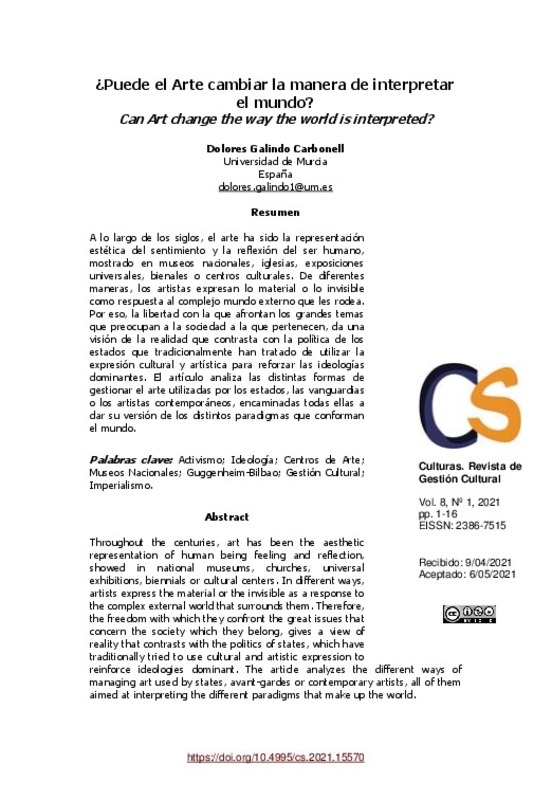JavaScript is disabled for your browser. Some features of this site may not work without it.
Buscar en RiuNet
Listar
Mi cuenta
Estadísticas
Ayuda RiuNet
Admin. UPV
¿Puede el Arte cambiar la manera de interpretar el mundo?
Mostrar el registro completo del ítem
Galindo Carbonell, D. (2021). ¿Puede el Arte cambiar la manera de interpretar el mundo?. Culturas. Revista de Gestión Cultural. 8(1):1-16. https://doi.org/10.4995/cs.2021.15570
Por favor, use este identificador para citar o enlazar este ítem: http://hdl.handle.net/10251/168987
Ficheros en el ítem
Metadatos del ítem
| Título: | ¿Puede el Arte cambiar la manera de interpretar el mundo? | |
| Otro titulo: |
|
|
| Autor: | Galindo Carbonell, Dolores | |
| Fecha difusión: |
|
|
| Resumen: |
[EN] Throughout the centuries, art has been the aesthetic representation of human being feeling and reflection, showed in national museums, churches, universal exhibitions, biennials or cultural centers. In different ways, ...[+]
[ES] A lo largo de los siglos, el arte ha sido la representación estética del sentimiento y la reflexión del ser humano, mostrado en museos nacionales, iglesias, exposiciones universales, bienales o centros culturales. ...[+]
|
|
| Palabras clave: |
|
|
| Derechos de uso: | Reconocimiento - No comercial - Sin obra derivada (by-nc-nd) | |
| Fuente: |
|
|
| DOI: |
|
|
| Editorial: |
|
|
| Versión del editor: | https://doi.org/10.4995/cs.2021.15570 | |
| Tipo: |
|







![HTML file [HTML]](/themes/UPV/images/html.png)

